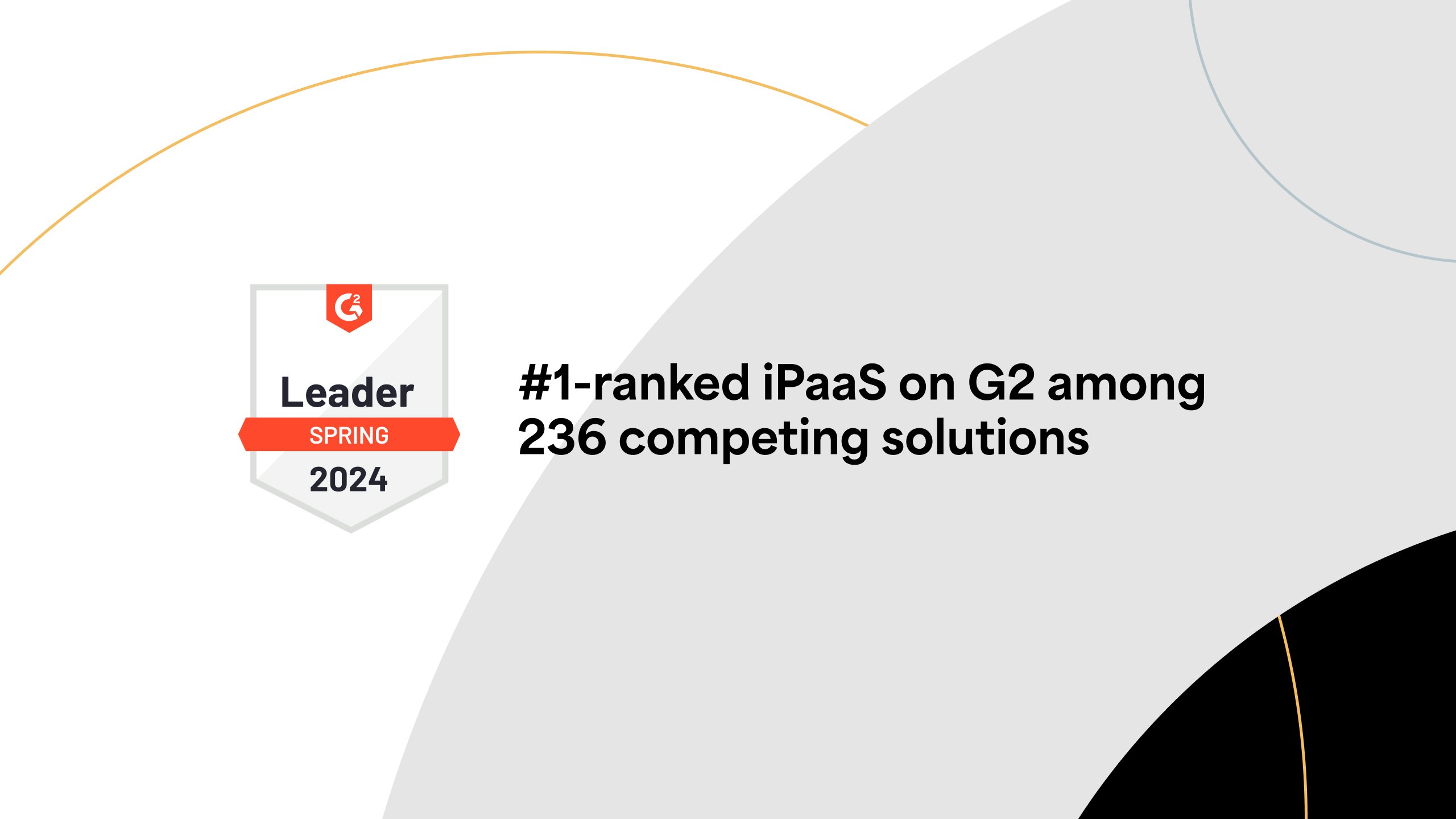Published May 23, 2024
How integration and automation can revitalize employee engagement

- Employee engagement has hit its lowest point since 2013.
- Manual processes, silos, and inefficiencies prevent employee satisfaction.
- Refocus your teams on fulfilling projects with integration and automation.
A recent Gallup survey delivered a wakeup call to business leaders across the US. It revealed that employee engagement has sunk to an 11-year low, and so far this year, only 30% of employees are actively engaged at work. With unengaged employees contributing to approximately $1.9 trillion in lost productivity nationally, it’s clear the way we work needs a rethink.
There is a bright spot amongst these findings: 70% of employees at top-performing organizations are engaged. By adopting strategies such as establishing a hybrid work environment, blending flexibility with accountability, and developing robust onboarding programs, these companies have achieved a ratio of engaged to disengaged employees more than seven times higher than the national average.
Introducing similar changes within your organization can be challenging as budgets tighten and hiring slows. The secret to enhancing employee satisfaction with limited resources is integrating your tech stack and automating your business processes.
The heart of the matter
There’s a variety of approaches you could take to pivot and reignite employee engagement, but you won’t get anywhere if your operations are working against you. When teams are stuck with manual tasks such as data entry, inventory updates, employee onboarding/offboarding, report generation, and other tasks caused by inefficient processes and disparate applications, strategic initiatives take a backseat. This leads to a lack of collaboration, burn out, and, ultimately, employee resignations.
The solution to this problem lies in integrating your tech stack. By streamlining your operations, you can refocus employee time on building relationships and advancing their careers.
The power of integration
Integration serves as a bridge between disparate systems–creating an interconnected ecosystem that fosters communication and collaboration. With integration, data flows freely between platforms, and updates made in one application are instantly reflected in others. This isn’t just about efficiency; it’s about creating a cohesive environment where teams can work together without the friction of siloed information.
Even better, by automating processes, you free up your most valuable asset–your people–to engage in work that’s meaningful and fulfilling. Herein lies the crux of boosting employee engagement: when employees see their time and skills being used for significant contributions rather than mundane, repetitive tasks, their investment in their work deepens.
Learn how to take the burden off your IT and finance teams with automation in these blogs: Overcoming Finance and Accounting Burnout with Automation and What is IT Automation?
The impact of automation
So, where do you start? We recommend focusing on the biggest friction points for your organization. For example, IT process automation.
Here’s a look at how automation can benefit key areas of your business operations:
- Enable a hybrid workforce: Gone are the days of traditional in-office work. Employees are looking for greater flexibility in their schedules and work locations. By integrating and automating systems, you can give your employees the tools they need to stay connected and up-to-date from anywhere.
- Streamline employee onboarding: The first days at a new job set the tone for an employee’s experience. Automation can ensure that onboarding is smooth and efficient. You can automatically set up onboarding and provisioning tasks to make sure employees have access to the systems and training they need on day one.
- Eliminate departmental silos: When your teams share the same data across systems, it aligns everyone. Without delays from manual tasks or waiting on data from other departments, teams can focus on building winning strategies. Integration allows for a level of collaboration that brings out the best in every team member regardless of industry, position, or location.
The bigger picture
Behind every statistic about engagement rates is a simple truth: people want to feel valued and that their work matters. By investing in tools that support employees’ workflows, you can not only enhance operational efficiency but also offer employees the kind of work they’re eager to engage with.
Improving employee engagement doesn’t require grand gestures or complete overhauls of your organizational structure. Sometimes, it starts with acknowledging that the best use of your employees’ time isn’t inputting data or managing spreadsheets. It’s in creative thinking, problem-solving, and collaborating across teams and functions.
Adopting integration and automation doesn’t just make logistical sense; it makes human sense. In the push toward a more engaged future, automation isn’t just a tool; it’s a catalyst for a reimagined way of working where every team member feels valued, connected, and engaged.




